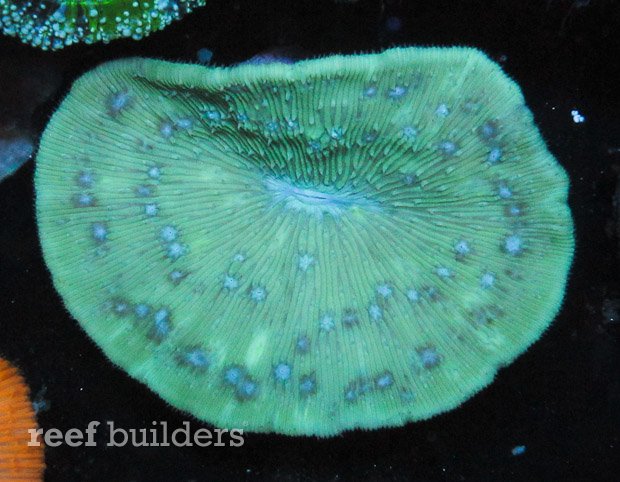Podabacia is a very unique genus of disc corals which is hardly never seen in the aquarium trade, let alone in any interesting color. How are lucky are we then that we stumbled upon an amazing colony of Podabacia motuporensis, in teal blue, with the perfect size and shape to put next to an also-blue Lithophyllon undulatum.
If Fungia and Cycloseris are primarily single, solitary polyps and free living, and Lithophyllon is colonial, attached and encrusting in growth forms, the basic plan for a Podabacia falls somewhere in the middle. The Podabacia colony we picked up was attached, but barely and only from a little stalk which had been removed from a surface.
With its prominent central corallite, this specimen has neatly radiating septa which are all very straight, and neatly spaced like satellites around the big center polyp mouth. The semi-conical shape is more reminiscent of a small capricornis colony than a typical disc coral. The skeleton of Podabacia is considerably thinner than what we are used to with Lithophyllon, but this coral may not be what it seems.
Some new research by Bert Hoeksema, Fungiid expert and after whom the “Hokie” Acropora hoeksemai is named, has observed that some colonies of “Podabacia” may in fact be a form of Lithophyllon undulatum. In the image below you can see both the differences and the similarities between the two and we’ll let the taxonomists sort out the names. We’re just glad to have this beautiful colony of ‘Podabacia’ and since it’s growing pretty fast we’ll be trimming off some frags in the near future.




